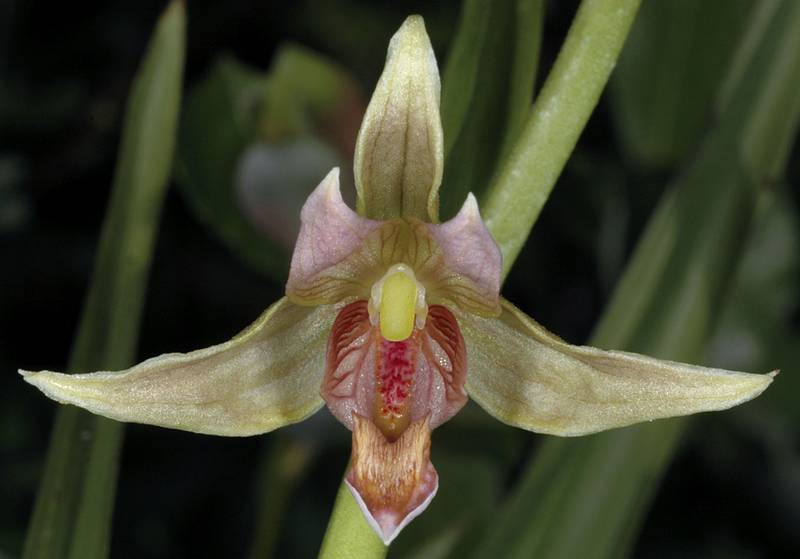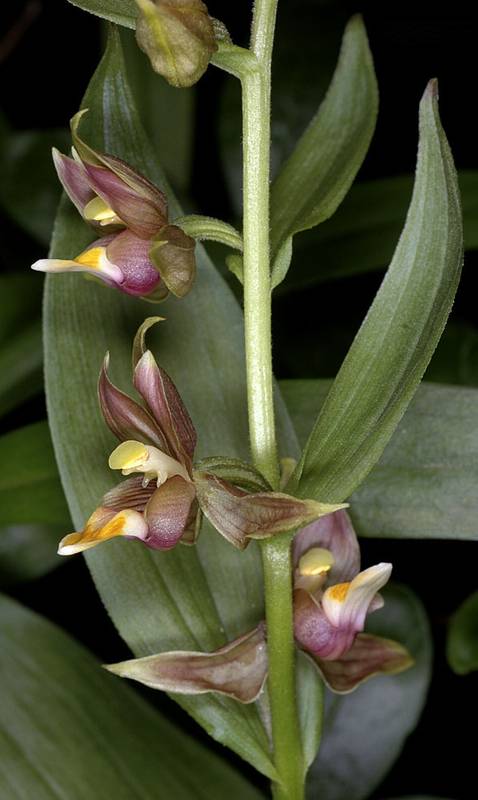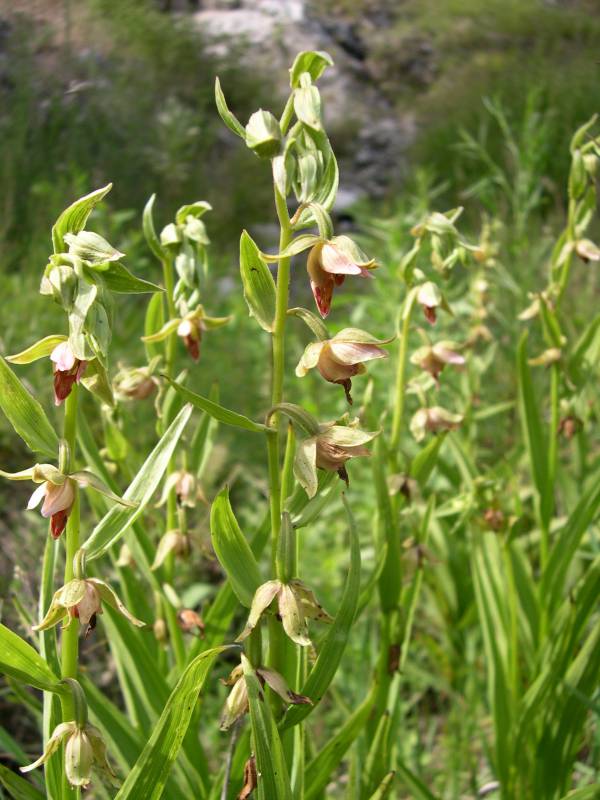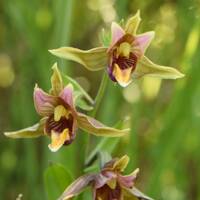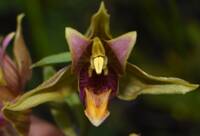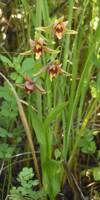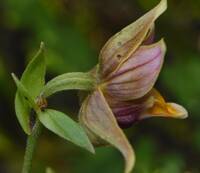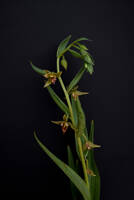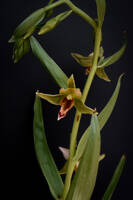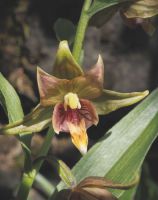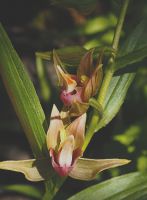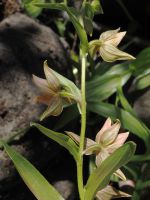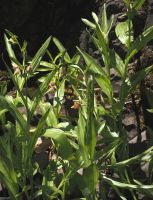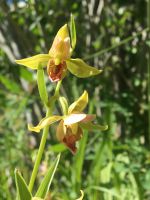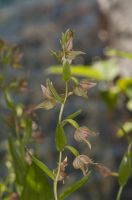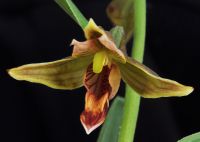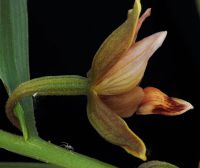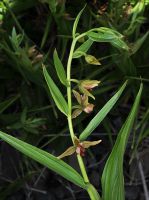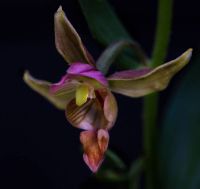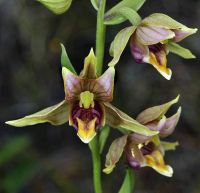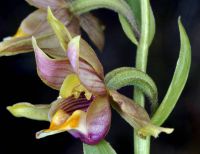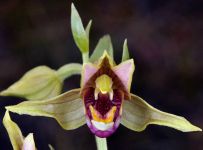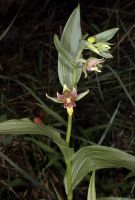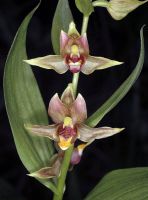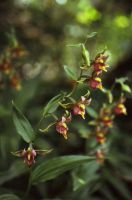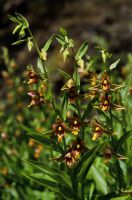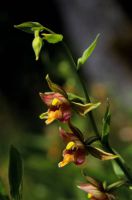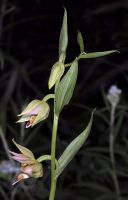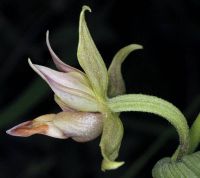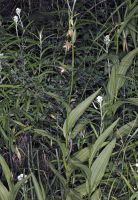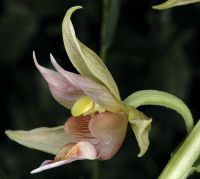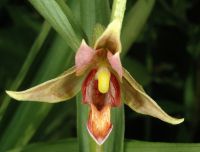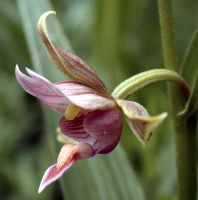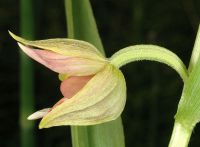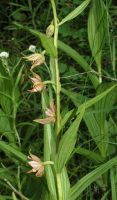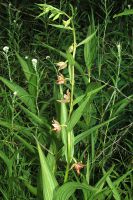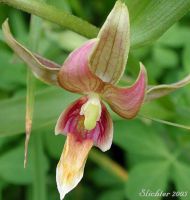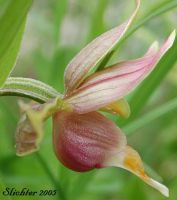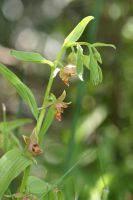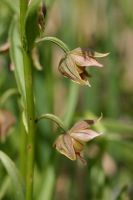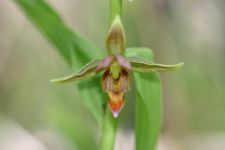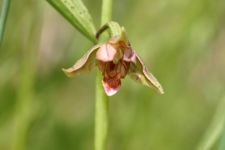Distribution: Occurring on both sides of the Cascades crest in Washington; British Columbia to Baja California, east to the Rocky Mountains and in scattered locations in the Great Plains.
Habitat: Stream banks, lake margins, around springs and seeps, especially in thermal waters in otherwise desert regions.
Flowers: April-July
Origin: Native
Growth Duration: Perennial
Conservation Status: Not of concern
Glabrous, perennial herbs from short rhizomes, the 1-many stems mostly 3-7 dm. tall.
Leaves alternate, numerous, sheathing, the lowest blade almost lacking, but gradually enlarged upward; blades broadly elliptic-lanceolate, 7-14 cm. long and 1.5-5 cm. wide.
Inflorescence a one-sided, bracteate, 3-15 flowered raceme; sepals unequal, coppery-green, 12-16 mm. long, the lower 2 spreading; upper 2 petals similar to the sepals, but more brownish-purple; the third petal (lip) 15-20 mm. long, sac-like, with prominent, raised, purplish lines, 3-lobed, the outer lobes prominent, the central lobe curved downward, greenish-yellow, triangular-ovate, the tip flattened; stamens and style fused to form a column 6-9 mm. long.
Capsule reflexed, 2-3.5 cm. long.
Publication: Fl. Bor.-Amer. 2: 202, plate 202. 1839.
Epipactis gigantea Douglas ex Hook. f. citrina P.M. Br.
Epipactis gigantea Douglas ex Hook. f. rubrifolia P.M. Br.
Helleborine gigantea (Douglas ex Hook.) Druce
PNW Herbaria: Specimen records of Epipactis gigantea in the Consortium of Pacific Northwest Herbaria database
WA Flora Checklist: Epipactis gigantea checklist entry
OregonFlora: Epipactis gigantea information
E-Flora BC: Epipactis gigantea atlas page
CalPhotos: Epipactis gigantea photos

